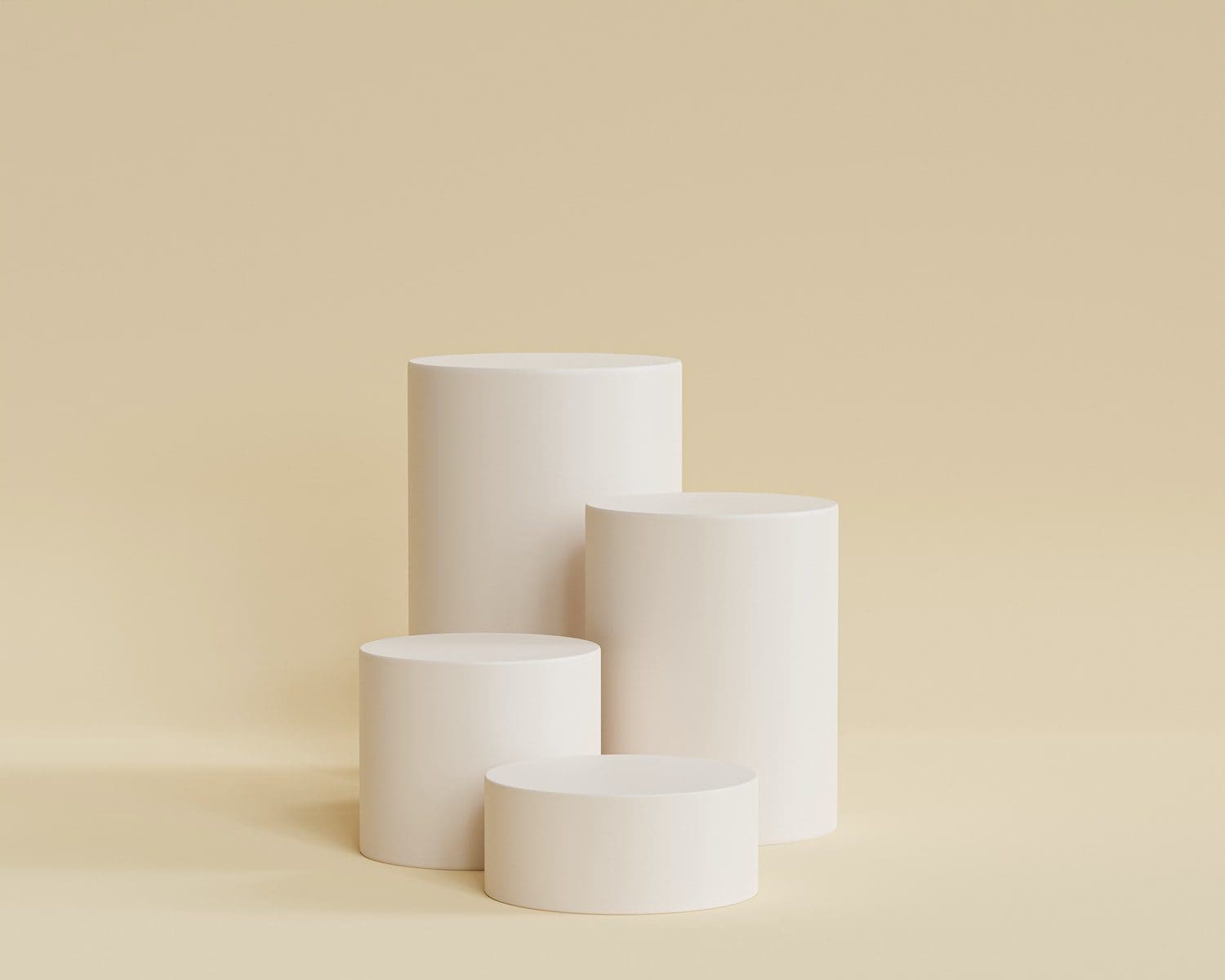The human eyes see a variety of things each day, some with very giant and noticeable structures while some with almost negligible characteristics, but the one thing that remains the same in all our experiences is the way in which we remember these things.
This becomes possible due to our understanding of various shapes and structures related to different things and objects. Human brains perceive different things in different ways.
One major way to memorize the existence of these objects is to remember them by their shapes and forms. While these two words are really confusing and used interchangeably, they can be characterized differently.
Key Takeaways
- Shape describes the outline or contour of a two-dimensional object, while form pertains to the three-dimensional structure of an object.
- The shape is an element of design, whereas form is an aspect of sculpture and architecture.
- Artists use shapes to create patterns, textures, and compositions, while forms convey volume, mass, and spatial relationships.
Shape vs Form
The difference between a Shape and a Form is that the former refers to a structure that can plainly be reflected on a plain sheet of paper in just two dimensions, while in the latter’s case, the structure happens to be a three-dimensional one and cannot be painted on a plain sheet. But this is not the only difference. These two are separate from each other in terms of perception and point of view as well. They are collectively used as a way of seeing things, but they differentiate the ways of seeing things into two categories.

While on one side, Shape refers to a structure having just two dimensions that can easily be reflected on just one plain sheet of paper. Certain examples are circles, rectangles, squares, etc.
It is a collection of one or multiple strokes of lines and seems just one way when it is seen by human eyes. It only shows the length or width of a particular object but does not denote the depth.
And Form refers to the state of a structure of an object in which the three-dimensional view of that particular object is seen.
It contains the length, width, and depth of certain objects, and it cannot be reflected on a plain sheet of paper. In technicality, it refers to the actual view of certain things.
Comparison Table
| Parameters of Comparison | Shape | Form |
|---|---|---|
| Meaning | In terms of visual arts, it refers to a structure having a flat view with a two-dimensional appearance. | In terms of visual arts, it refers to a structure having a real and not an illusionary three-dimensional view of any object or person. |
| Dimension | Two-dimensional view | Three-dimensional view |
| Side | It consists of the length and width only | It consists of the length, width, and depth as well. |
| Complexity | These are very simple figures and easy to comprehend. | These are complex and tough to comprehend. |
| Nature | It reflects the illusionary status of a particular object. | it refers to the real and original status of an object. |
| Examples | Circle, rectangle, triangle, square, etc. | Sphere, cone, cube, cuboid, etc. |
What is Shape?
A Shape literally refers to a structure generated by the combination of certain flat lines on a plain paper sheet. This provides a two-dimensional view and can easily be painted on blank paper. It consists of one or more than one lines joined all together.
A shape clearly shows the length and width of an object but fails to show its depth or height inside of it. It provides only an illusionary view of the thing being looked at. It is good for creating understanding in children with respect to certain structures.
Shapes are really easy to comprehend and accordingly evaluate owing to their simple and easy structure and composition. They do not have much in that to get confused about.
For example- if one is asked to draw the earth on a piece of paper, all he can draw is just a round figure pertaining to the earth. In actual terms, it is just the shape of the earth, not the form. Certain examples of shapes can be circles, triangles, rectangles, squares, etc.

What is Form?
A Form is also an element of art, but unlike shape, it is three-dimensional in its structure and can be really complex in its nature to comprehend. It also shows the length and width of an object but also shows the depth.
And this depth feature distinguishes it from all other elements of art.
In other words, it can be said that when a shape comes out of paper in real life, it becomes a Form and showcases originality. This originality comes from all three dimensions that are reflected in this shape.
For example- similar to the example mentioned above, the actual earth is the only form of earth. Identical forms of earth can be manufactured by giving their form to a miniature.
Certain examples of shapes can be a cube, cuboid, cone, cylinder, etc.

Main Differences Between Shape and Form
- In terms of visual arts, Shape refers to a structure having a flat view with a two-dimensional appearance. While on the other hand, in terms of visual arts, Form refers to a structure having a real and not illusionary three-dimensional view of any object or person.
- While Shape shows a two-dimensional view, Form showcases a three-dimensional view of any object.
- Shapes are easy to comprehend due to their simple structure, while Forms are tough to understand as they have a complex structure.
- The shape consists of the length and width of any object, while the Form shows the depth also along with these two.
- Shape refers to the imaginary and illusionary status of a thing, while Form is the actual structure of that object seen all over the world.
- Circles, rectangles, triangles, and ovals are all examples of Shapes. And cone, cube, cuboid, and cylinder are examples of Forms.

- https://books.google.com/books?hl=en&lr=&id=zJzC7nfAMWEC&oi=fnd&pg=PP16&dq=shape+and+form&ots=xDWA9EpnIP&sig=revcPi72cGlX8zRWipsPTisuEVA
- https://link.springer.com/article/10.1007/s00427-016-0539-2

The intriguing comparison of shape and form in this article provides valuable insights into visual arts. It deepens our understanding of the basic elements of art and their perceptual differences.
This comparison between shape and form is quite enlightening. It helps us comprehend their distinct properties and applications in various artistic contexts.
Absolutely, understanding these differences expands our knowledge and appreciation of art and visual representation.
The article offers a clear and concise explanation of the differences between shape and form. This understanding enhances our perception of visual arts.
The article’s systematic comparison of shape and form provides a deeper understanding of their individual characteristics. The examples used are helpful in illustrating the differences, making the concepts more accessible.
Understanding the difference between shape and form is important. This article provides clear definitions and gives us a deeper insight into how these elements of art are used and perceived.
Absolutely, the article presents a comprehensive comparison between shape and form. It’s fascinating to explore how these elements contribute to visual arts.
The distinction between shape and form is effectively presented in this article. It provides both a technical and perceptual comparison that offers valuable insights into art and visual elements.
The human eyes see a variety of things every day, some with very giant and noticeable structures while some things have almost negligible characteristics. Viewing things can be linked to our understanding of different shapes and structures, which are perceived differently by the human brain. It’s interesting to understand the difference between shape and form, and how artists use these concepts to express themselves artistically.
I agree, the understanding of shapes and forms is key to art and visual perception.
The article’s detailed exploration of shapes and forms offers an intellectually stimulating analysis of how these elements are perceived in visual arts. The comparison table effectively highlights their distinct characteristics and natures.
Absolutely, the article’s in-depth comparison enhances our understanding of the elements of visual arts.
The article effectively explains the complexity of form in comparison to shape. It’s intriguing to consider how form is an essential aspect of the three-dimensional structure of an object, providing a deeper understanding of its depth and volume.
I completely agree. The article provides valuable insights into the nature, complexity, and characteristics of form.
This article provides an insightful comparison of shapes and forms, elucidating their varying dimensions, complexities, and natures. The examples effectively illustrate the differences between these two visual elements.